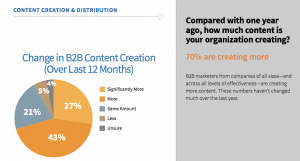Most marketers would swiftly agree with the idea that a personalized experience – campaigns or content delivered to users based on their behavior or attributes – is a pretty good idea. In fact looked at through one end of the telescope, the entire history of marketing has been one long slow process of getting smarter at delivering targeted, relevant messages.
But ask those same marketers what personalization actually means to them in practice, and you’re guaranteed to get a whole range of different answers. The truth is that ‘personalization’ is an easy thing to talk about, and a tougher proposition to deliver. Like a lot of things!
We’ll look at a few of those answers you might expect in a moment, but before personalization is even considered it helps to ask a more pertinent question: “why?” At each stage in a personalization process, there should be a clear understanding as to why the activity is taking place – rather than it simply being put into effect because it feels like ‘the right thing to do’. The act of personalizing content and campaigns is to some extent never-ending (or at least it ends with 1-2-1 communication), so always consider the cost of adding one more way to slice your user base (and weigh it against the benefit)
That’s a useful way to run the rule over some of the possibilities outlined below, all of which are possible, but some of which may not be necessary. Similarly, in some cases truly effective forms of personalization are beyond the capabilities of a typical app business (not those using Swrve, obviously!) If that is the case, it’s time to move beyond superficial personalization and invest in more meaningful marketing.
To my mind there are ultimately three core forms of personalization – in other words answers you might get to the question above:
Message Personalization, or in other words merging a string (such as a first name) into a push notification or in-app message. Nice to have – but if all you are doing is putting a first name into a message being sent to your entire user base, probably not hugely effective
Timing Personalization. Now we’re talking! We may send a message to a specific group of individuals, and indeed add their names and other relevant details within that message. But when they receive, or when they should receive it, will vary within that group.
This is especially relevant in the world of mobile apps – where behaviors tend to be impulsive and ‘in-the-now’, which in turn means that sending a message at a time when a particular user is unlikely to open the app will greatly reduce effectiveness. It will effectively appear, be ignored, and then die.
Instead, identify when specific users are responsive to messages, or prefer to use the app, and then personalize the timing of those messages to suit the individual.
Audience Personalization. A category that is extremely broad, but ultimately the secret to success on mobile. This includes all changes in experience, or campaigns, that are personalized on the basis of what we know about the user as an individual. That covers their previous behavior in the app (what they have looked at, purchased, ignored etc), their demographic details (language, location, gender and so on) and their current status in terms of lifecycle (how long they have been active in the app, what their current balance is, how long they are lapsed, etc)
This is true personalization, and for marketers it is what makes for effective campaigns that both move the needle where it counts, and avoid irritating users who are likely to have no interest.
Truly smart marketers, of course, will be bringing all three of these personalization types to bear and really hitting the ball out of the park! And perhaps most importantly, they’ll have implemented a solution that brings the marginal cost of adding new levels of personalization somewhere close to zero (I’m talking about Swrve here!)
(156)
Report Post







